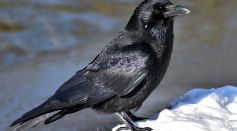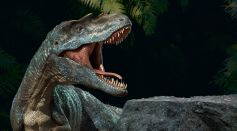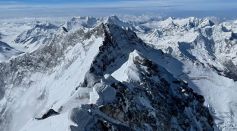ENVIRONMENT & CLIMATE

Polar Bears Chase Reindeer for Food; Diet Changes Due to Climate Change

Earth is Shrinking! Scientists Reveal It's Due to the Atmosphere Affecting the Planet's Mass

If This Humans Become Extinct, Will Animals Evolve?

Full-Scale Imaging of Egyptian Pharoah Amenhotep I Face Shown for the First Time After 3,000 Years Through CT Scan

Mediterranean Coasts Found with Additional Clues of Thera-Santorini Eruption; Massive Tsunamis Hit Right After Explosion

Smartest Animal in the Planet? Clever Crows Can Assign Value to Tools They Use Just Like Humans

Dinosaur Discoveries in 2021: Which Prehistoric Fossil Finds About the Extinct Reptiles are the Most Unique This Year

Earth’s Tallest Mountain: Are there Other Names Than Mount Everest? Report Has Surprising Revelation
Top Science Times Stories 2021: Hot Issues, News That Made Headlines This Year

Recent Deadly Tornadoes Are Different Than Usual in Terms of Duration, Strength; Scientist Explains Why

Dinosaur Footprints Discovered in Wales, Imprint Made By 200-Million-Year-Old Triassic Sauropod

Why Is Earth's Atmosphere Losing Oxygen? Natural Thief Identified Through Preserved Ice Bubbles in Antarctica

Female Albino Jaguarundi Cub Rescued in Colombia: Being White Will Most Likely Decrease Its Chances of Survival in the Wild

Seals Have A New Job: Exploring Antarctic Ocean Conditions in Continental Shelf Areas That Threatens to Collapse
Most Popular

Will Earth's Magnetic Poles Flip Next? Magnetic Pole Reversal Explained Through Cutting‑Edge Magnetosphere Science

Relativity Time Dilation Explained: The Physics of Time and Why It Moves Differently in Space

How Lightning Science Reveals Why Charged Storms Are Rising with Global Warming Effects

How AI Is Used in Weather Prediction: Smarter Forecasting Through Machine Learning





